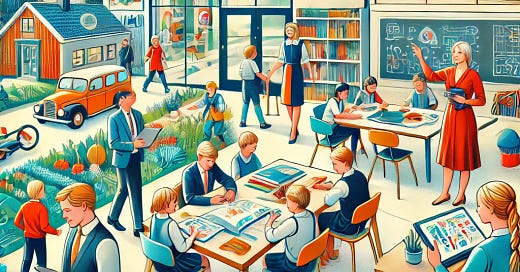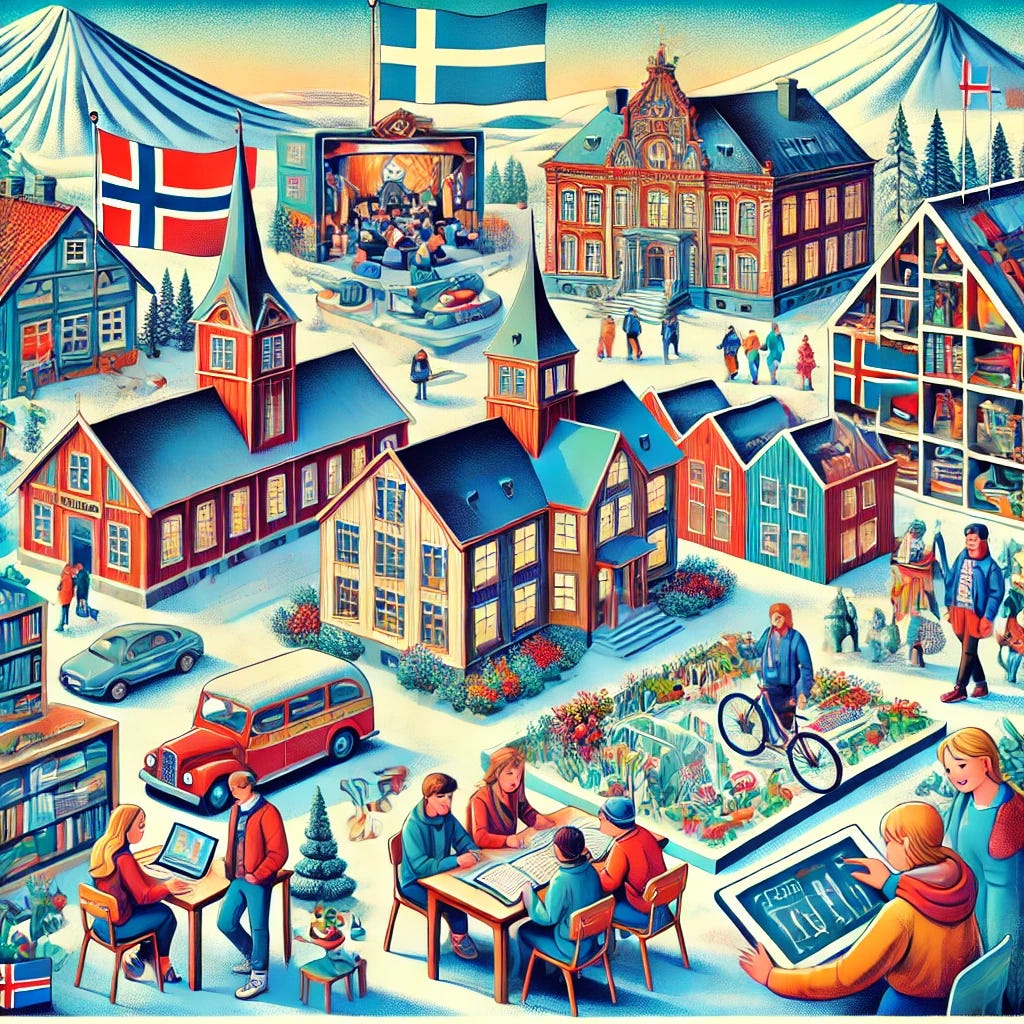All Things Nordic #29: Exploring the Educational Landscapes of the Nordic Countries
Your Digest from Scandinavia and the Nordic Countries
All Things Nordic Newsletter: March 11, 2025
Exploring the Educational Landscapes of the Nordic Countries
The Nordic countries—Denmark, Finland, Iceland, Norway, and Sweden—are renowned for their robust educational systems, each reflecting a commitment to quality, equity, and holistic development. This edition delves into the structure and recent developments within these systems.
Denmark
Structure: Danish education begins with the Folkeskole, encompassing primary and lower secondary education from kindergarten (optional) through 9th grade (ages 6–16). An optional 10th grade is available for additional academic preparation. Post-Folkeskole, students can pursue various upper secondary education paths, including:
STX: General upper secondary program.
HHX: Higher commercial examination program.
HTX: Higher technical examination program.
HF: Higher preparatory examination program (two years).
These programs prepare students for higher education or vocational pursuits.
Recent Developments: The government will introduce a smartphones ban in schools by law. The proposed legislation specifically targets smartphones, personal tablets and similar devices that provide extensive digital functionalities, aiming to restrict their use during lessons and breaks. The initiative seeks to address concerns about the negative impact of digital device usage on children’s well-being and development.
Finland
Structure: Finnish education is characterized by its egalitarian approach:
Primary Education: Nine years of compulsory Peruskoulu (comprehensive school) for children aged 7 to 16.
Upper Secondary Education: Post-Peruskoulu, students choose between:
Lukio: Academic high schools culminating in the ylioppilastutkinto (matriculation examination), essential for university admission.
Ammatillinen oppilaitos: Vocational schools offering practical skills and qualifications.
Finland's education system consistently ranks highly in international assessments, reflecting its emphasis on equality and quality.
Recent Developments: In Riihimäki, a town in Finland, schools have reverted from digital devices to traditional books, addressing concerns about screen time and its impact on learning. Teachers observed improved focus and comprehension among students with this change.
Norway
Structure: Norwegian education comprises:
Barneskole: Elementary school for grades 1–7 (ages 6–13).
Ungdomsskole: Lower secondary school for grades 8–10 (ages 13–16).
Videregående skole: Upper secondary school for grades 11–13 (ages 16–19), offering both general and vocational tracks.
Education is compulsory for ten years, ensuring foundational learning for all students.
Sweden
Structure: Swedish education traditionally starts with a mandatory preschool year (förskoleklass) at age six, followed by:
Grundskola: Comprehensive school from grades 1–9 (ages 7–16).
Gymnasium: Upper secondary education offering:
Vocational Programs: Preparing students for specific trades.
Preparatory Programs: For those aiming for higher education.
Recent Developments: Starting in 2028, Sweden will lower the school starting age from seven to six, integrating the preschool year into primary education. This reform aims to enhance foundational skills in reading, writing, and mathematics. However, it has sparked debate, with critics emphasizing the importance of play-based learning in early childhood.
Iceland
Structure: Iceland's education system is organized as follows:
Grunnskóli: Compulsory education for children aged 6 to 16.
Framhaldsskóli: Upper secondary education, which is optional and typically lasts four years, catering to students aged 16 to 20.
The system emphasizes inclusivity and personalized learning approaches.
The Nordic countries prioritize accessible, high-quality education, continually adapting to societal needs and research findings. While each nation has unique approaches, common themes include a strong emphasis on equity, student well-being, and preparing learners for active participation in society.
Thank you for being a valued reader of the All Things Nordic Newsletter! Hyggeligt regards,
Frank Land
ATN Newsletter Editor
For more insights and updates, visit our website or follow us on social media





